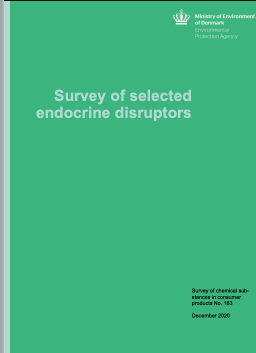Chemycal has been acquired by 3E
Learn MoreChemycal has been acquired by 3E
Learn MoreDiscover how Chemycal PRO helps you boosting your regulatory monitoring:

Summary and conclusions
Endocrine disruptors can affect the body’s own hormonal systems in various ways. The activity of some substances resembles (but may be more pronounced than that of normal hormones), while others block or impede the activity of natural hormones. Endocrine disruptors are suspected of contributing to the increasing prevalence of a number of conditions and illnesses, such as malformed genitalia and affecting brain development. Fetuses and children are most vulnerable to exposure, particularly during their development as their organs are not fully developed and thus can be affected. Endocrine disruptors may result in serious effects that do not appear until later in life or in subsequent generations. The exposure of children and pregnant women (and thereby unborn children) to substances that may affect the natural balance of hormones is problematic and can be a critical issue since hormone-regulated processes by which organs develop are particularly sensitive. For this reason, the exposure of children and pregnant women to problematic chemicals (including endocrine disruptors) should be limited.
Purpose and scope - The purpose of this project was to investigate the use of selected endocrine disruptors and/or suspected endocrine disruptors in products which children and pregnant women use. The project has the additional purpose of performing certain screening analyses on consumer products. Consumer products have been selected such that 1/3 come from physical and online shops within Denmark, 1/3 come from online shops within the EU, and 1/3 come from online shops outside of the EU, in order to investigate whether differences exist in the content of selected endocrine disruptors and/or suspected endocrine disruptors depending on where the purchased products originate from.
The scope of the project was limited to a screening investigation of the selected substances as described by the Danish EPA in its introduction to the project.
The project is limited to the following selected substances: Bisphenol AF (BPAF), bisphenol A (BPA), bisphenol S (BPS), 4-methylbenzylidene camphor (4-MBC), Butylparaben, propylparaben, BHA, BHT, D4.
The project was additionally limited to focusing on products that children and pregnant women use or are exposed to. Furthermore, the screening phase was restricted to analysing only consumer products.
CONTINUE READING ON mst.dk
2013 © MyChemicalMonitoring. ALL Rights Reserved. About Us | Terms and Conditions